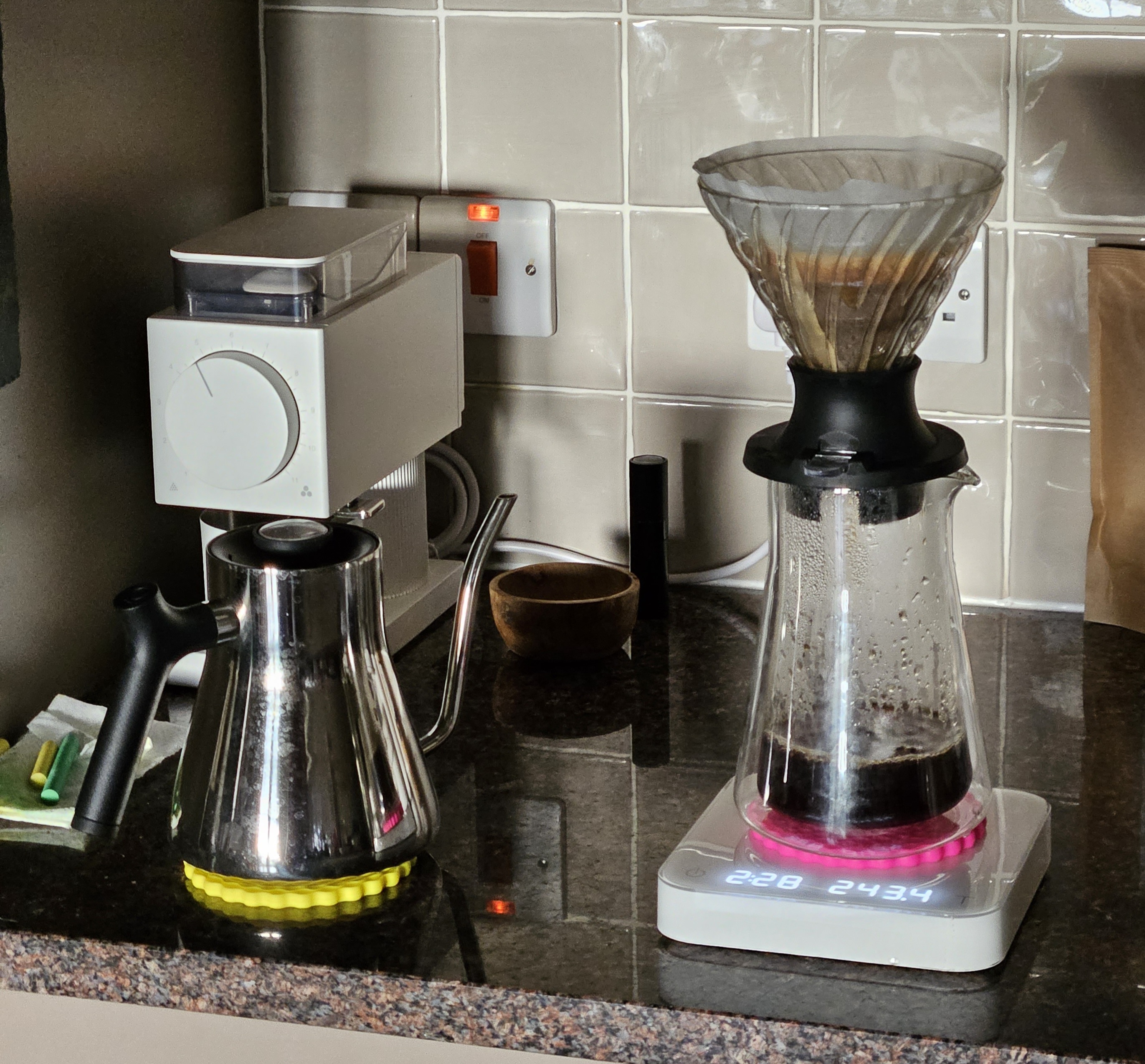Yeah they’ve left the dipper in it too.
Hannah
Fortysomething trans woman (she/her) living in the middle of nowhere with husband, cats and puppy. Interested in esports, film photography, music, cooking, nature, and witchy things. Not on social media.
- 6 Posts
- 42 Comments
I know you don’t want to spend too much but there’s also no point buying something that misses the mark in terms of the grind you need for the espresso you want. When I was looking at grinders for espresso I narrowed it down to the 1zspresso J-Max for a hand grinder or the Baratza Encore ESP for a machine grinder. Both are a bit more expensive than the basic options but give much more versatility for dialing in grinds.
Yes it’s to keep my wrists a bit further apart but also to give my pinky fingers less work to do.
Yeah I’m new to it and still getting used to it. I’ve gone the slow but accurate route, which is incredibly frustrating, but I’ll get there.
Haha its actually a Neon Genesis Evangelion themed keycap set so the additional keycaps are icons of the angels. I have them wired up to Vim and AutoHotkey shortcuts.
It’s mostly a copy of my 34 key layout so the thumb keys are shift - space - enter - layer. Having the spacebar would throw that off. I was tempted but in the end I didn’t want to lose a key on the top three rows for “enter”.
I was going to write a bunch of things about the Switch but I guess they would apply to most other pourover drippers too. I’m coming from the Chemex as a comparison, which is lovely but a bit slow and unwieldy for that one cup of coffee.
Having said that what makes the Switch stand out to me is that it feels like such a high quality piece of kit, and having the immersion element in the mix really suits me. My brain interprets that as “big aeropress” for whatever reason.
Here is a better angle as requested:

Yes that’s basically why I got my Switch and its mostly the way I use it: percolate for the bloom then immerse for the brew. Although I’m going to play around with that soon.
I can only compare it to the Chemex, which is a bit of a different beast. I find that I can get a great balance of extraction and flavour out of the brew because I can immerse. For my work coffee I have settled into a medium grind of 18g coffee + 54g water, gentle pour for bloom, followed by a full pour (to 300g) at 30 seconds with the switch up so that the brew immerses, then switch down at 2 minutes to let the brew drain through the settled grounds. Then I vary the grind to sort any extraction issues with the particular beans I have.
I’m not sure if glass v plastic will make a difference like the ceramic does. I prewash my filters with boiling water which will heat up the Switch but I’m not sure how effective that will be.
PS: I changed the title of this post to be super specific because “Hario Switch” might have gotten some unintentional crossover from the Gaming community 😁
Spending the money on the grinder first is such a wise choice - followed obviously by spending the money on the beans themselves - and you can’t go wrong with an aeropress. It’s also ridiculously portable, especially if you measure out your beans beforehand into little single dose containers…
That’ll work. I will have to try that myself to see whether immersion vs percolation in cold brew makes a difference.
I make my cold brew in a plastic and glass contraption that produces a drip onto a reservoir into a bed of grounds that has a metal filter on the bottom. I can’t say I have ever noticed a metallic taste to the coffee. I put an aeropress filter on top of the grounds to help the moisture distribute. I suppose you could do the same at the bottom to avoid direct contact between the grounds and the metal in the filter, if it was a concern that some kind of reaction might take place (that wouldn’t otherwise take place in the presence of ~0C water + dissolvables).
I’ve never understood the drama around inverted to be honest. I’ve done it and I’ve never had anything close to an accident. All of these stories about catastrophe. How? Just … put the cup upside down over the thing and rotate them both back?
The only real issue I have with inverted is I kind of like avoiding topping up my brew with water but its a totally minor thing if it gets the flavours. I suppose it allows you to try things out with much smaller doses of coffee too!
I totally agree. This community has been really lovely and the whole reddit blow up happened just at the time I had started noodling with different brewing methods again so it was a happy coincidence. Thanks everybody!
It’s possible. The local roaster I am getting my beans from is new to me. He has said that he prefers lighter roasts suitable for brewing but I don’t think he notes much on the delivery. The beans feel lighter roasted? Not dark and dessicated at least.
Oh brill. I’ve found a place down the road that has some single origin medium roasted and I’ve ordered some to try. Thank you for the suggestion!
PS: bit late on the brew setup thing 🤓




I use the Hario Switch almost exclusively for pourovers. It’s glass plus you can throw in immersions with it. Bit spendy compared to the plastic cones though.